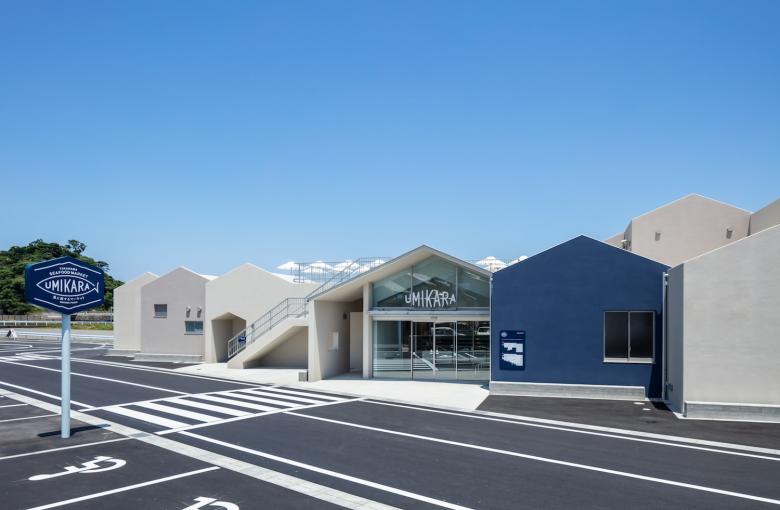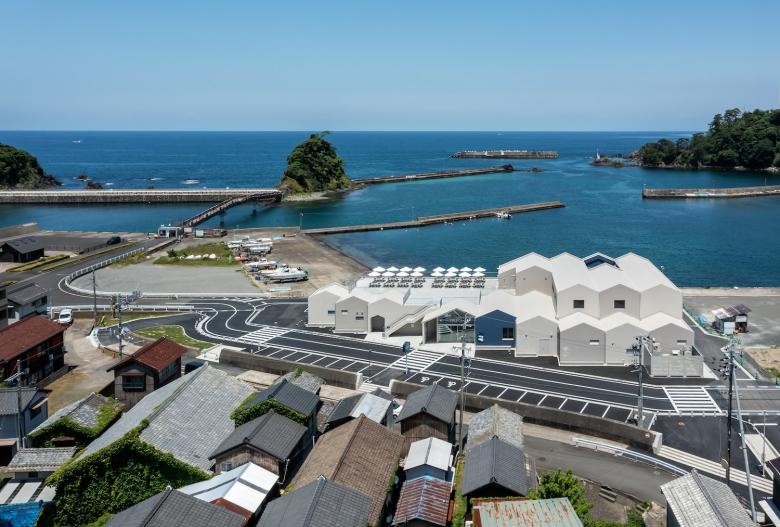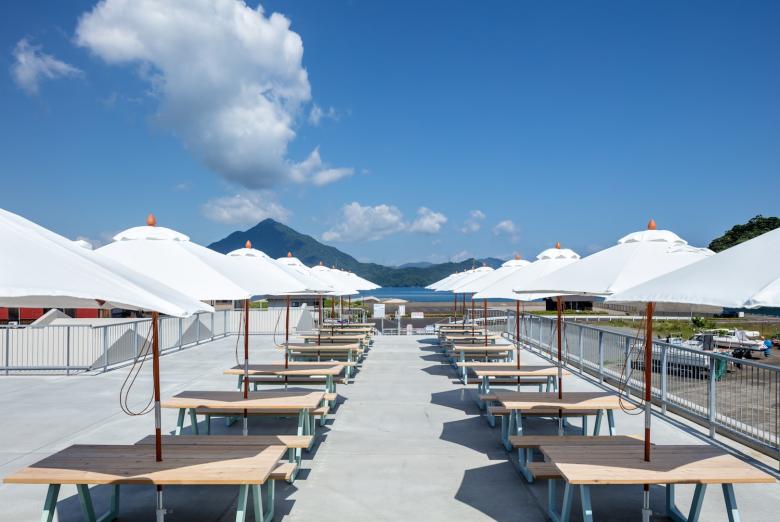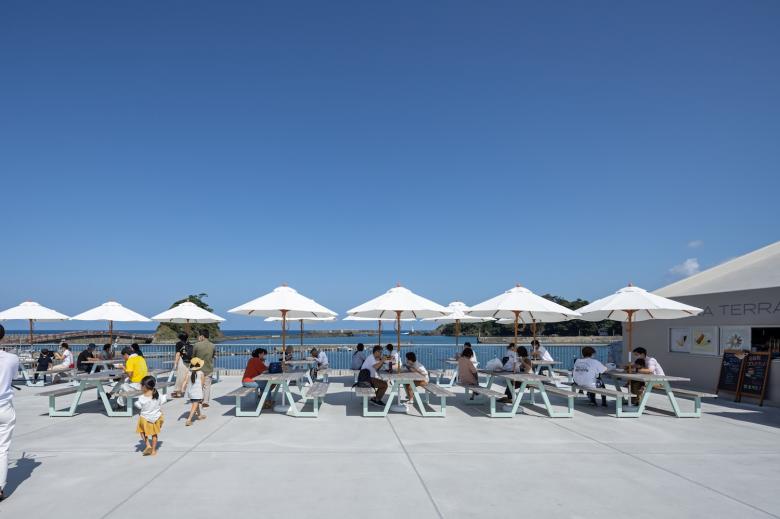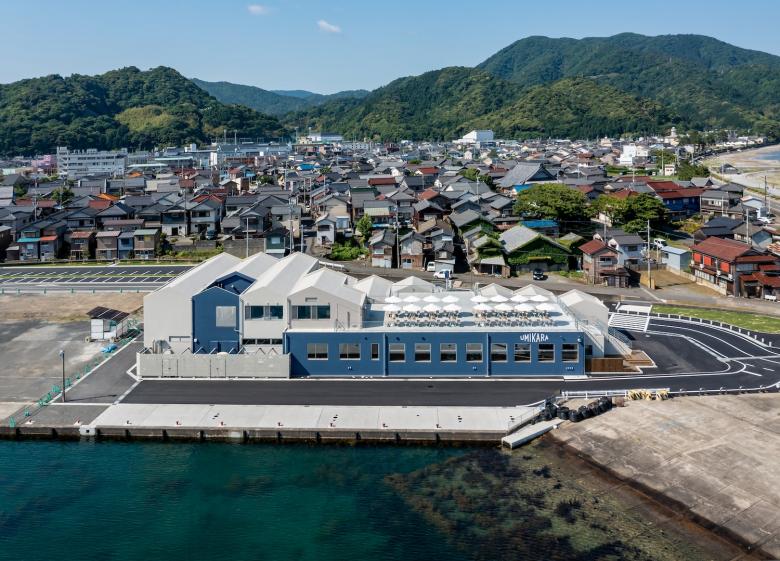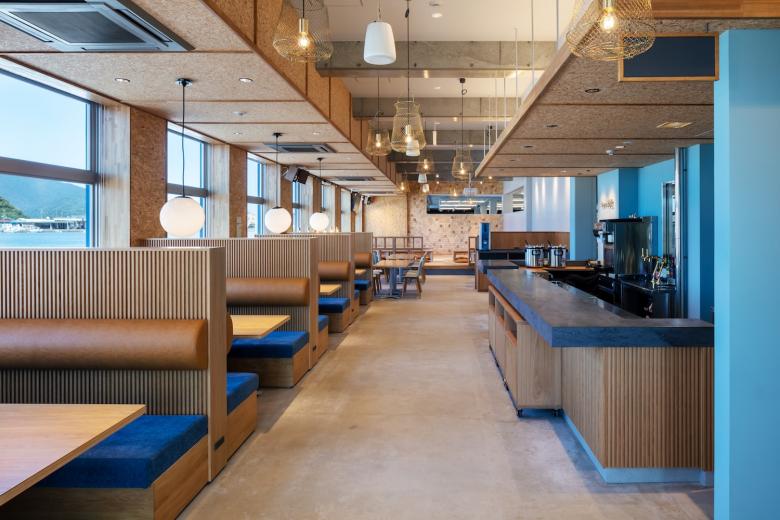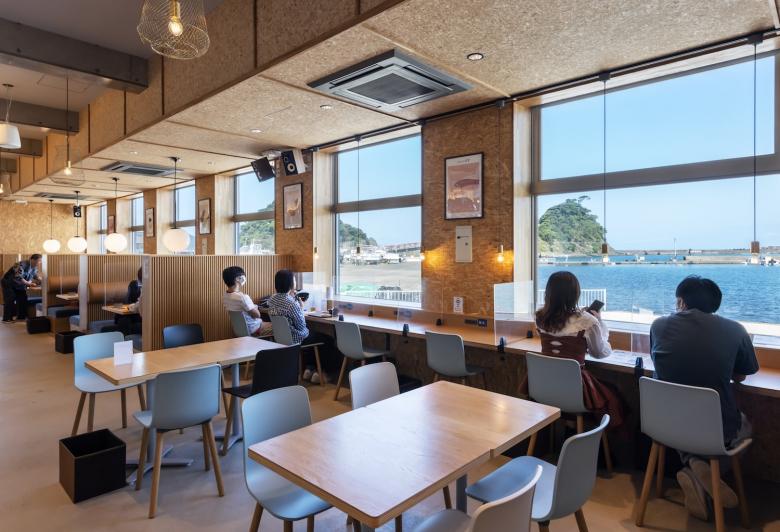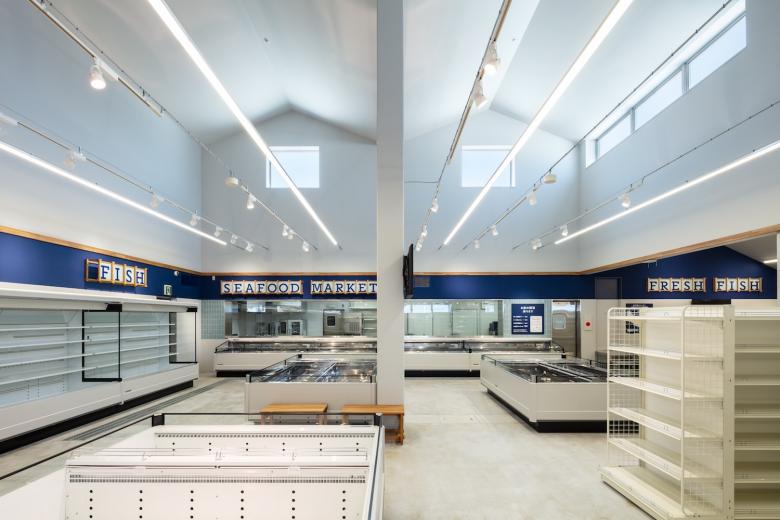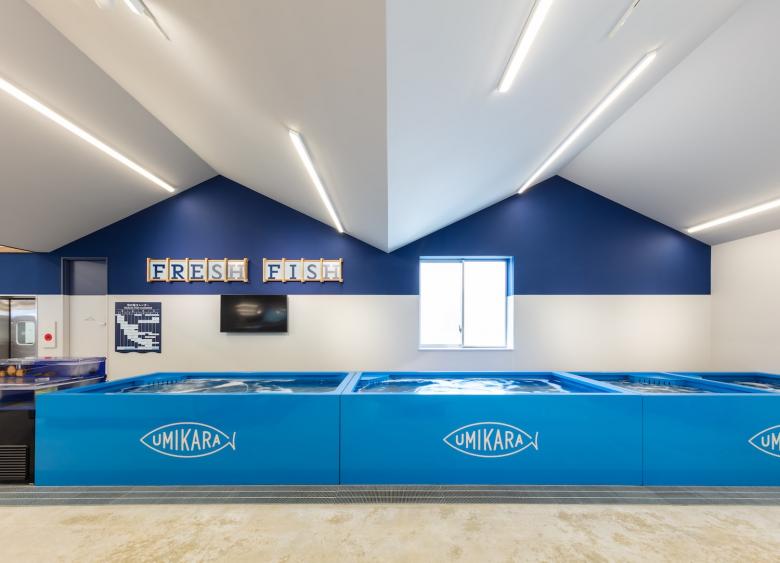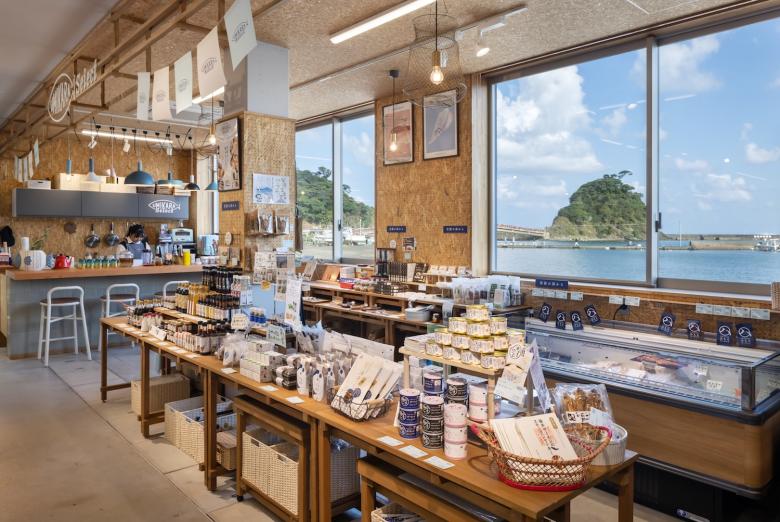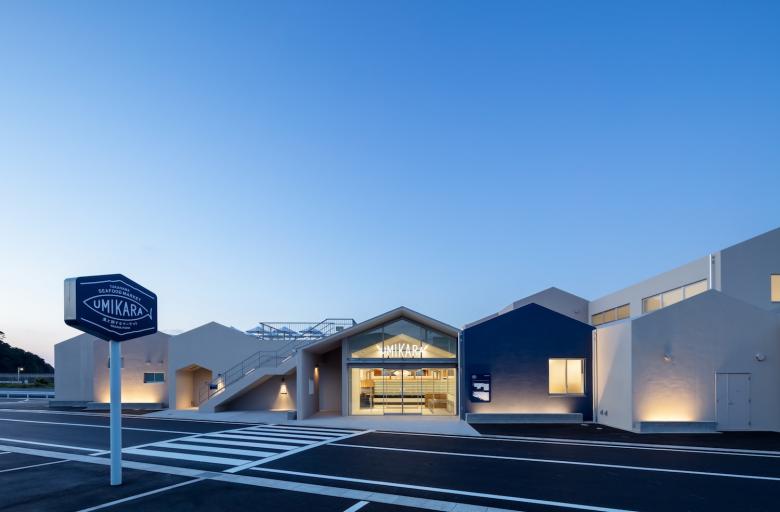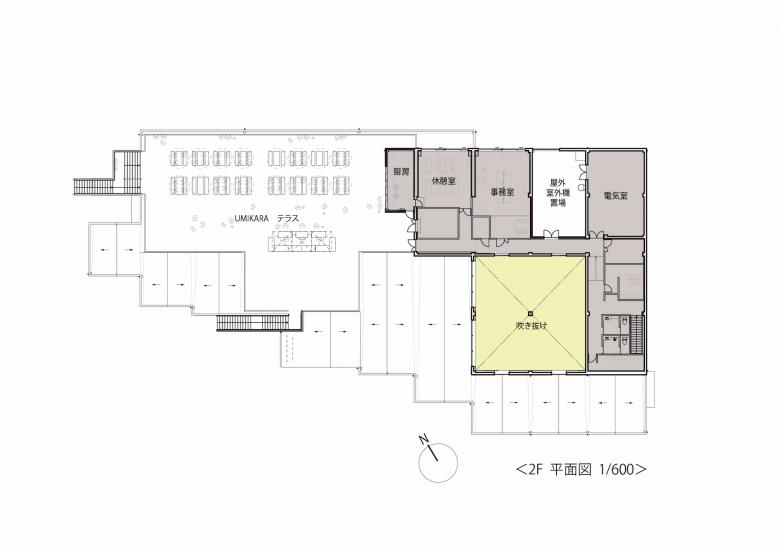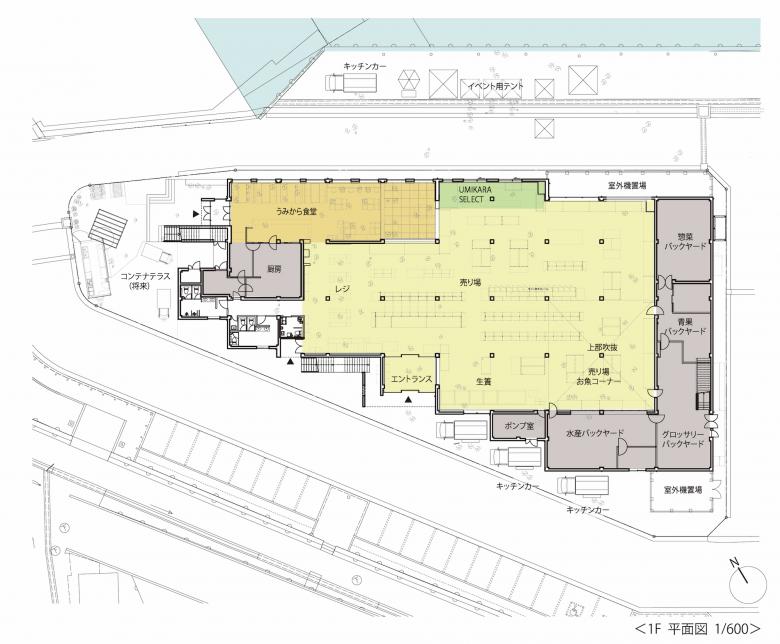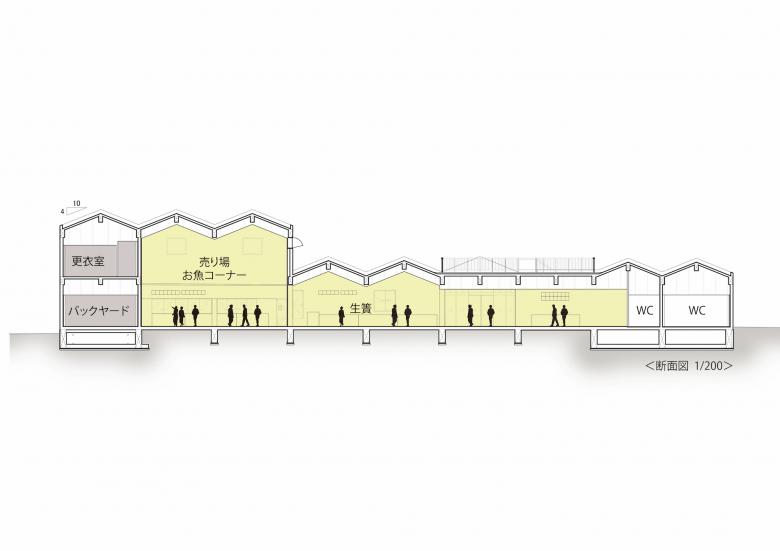Umikara
Takahama, Fukui, Japan
- Architects
- Geo-Graphic Design Lab.
- Location
- Takahama, Fukui, Japan
- Year
- 2022
- Client
- 高浜町 Takahama Town
- Architect
- GEO-GRAPHIC DESIGN LAB.
- Structural Design
- Mitsuda Structural Consultants.
- Equipment Design
- Shimazu Design Office
- Exterior Design
- soji
- Graphic Design
- UMA / design farm
- Market & Restaurant Interior Design Cooperation
- GURI
- Construction
- Yamaso Home
- Construction
- Yamaso Home
- Mechanical
- Obama Ueta Kenzai
UMIKARA is located next to a fishing village that thrived as the epicenter of Takahama town's subsistence since ancient times.
The initiation of the foundational plan dates back to 2016. While we are "bequeathing" the panorama of this fishing village, our aspiration is that, with the finalization of UMIKARA as a facility for the sixth industry, we will create the "new fishing town" characterized by contemporary livelihoods rooted in fishing.
We have designed a space where locals can experience in the traditional lifestyle of the village through a rejuvenated landscape its preserves the essence. It transcends being solely the facility catering to tourists; rather, it serves as a center for place-making,promoting the development of a "new version of the fishing town" for local residents, fishermen and townspeople, even during the winter when tourist numbers are low. For this purpose, it is important to contemplate architecture in a timeline that extends from the period children spend at UMIKARA to their adulthood. This foresight necessitates preparing the environment to withstand unique climatic elements, such as the winter snowfall common to the Sea of Japan and the formidable seaside winds.
Aligning the roof slope and dimensions with the cultural topography created by the cluster of fisherman's huts and primary structures in the salt-earth village situated in the hinterlands of the site, we adjusted the luminosity for the commercial facility based on the sampled color palette. This approach seeks to create the new landscape while seamlessly assimilating the existing cultural milieu, with the primary intent of augmenting the value of the local panorama and instilling the sense of pride among the local people.
Considering the constant sea breeze in this area, where even stainless steel succumbs to rust, the chosen construction material is reinforced concrete, complemented by a parapet to prevent snowfall and a roof designed to retain snow. Furthermore, careful insulation of the reinforced concrete frame and controlled openings have resulted in the attainment of a prestigious CASBEE A rank rating. The rooftop UMIKARA terrace, in its quotidian capacity, serves as the communal space offering panoramic views of the ocean, mountains, and village, accessible not only to tourists but also to local residents and children. It serves as a shared venue wherein Takahama Town, operators, and local volunteers can orchestrate various of events, including BBQs and festivals.
Additionally, the architectural framework adopts a rigid frame structure with load-bearing walls constructed from reinforced concrete, strategically implemented to shield against the formidable sea breeze from the Sea of Japan. Given that the walls bear the brunt of seismic forces, the dimensions of the pillars have been standardized to 350 square meters, aiming to reduce the perception of pressure. Positioned at the focal point of the atrium, a column boasting an internal height of approximately 7 meters emerges. Despite its height, similar to its counterparts, it follows to the 350-square-meter standard and features a slender profile with an h/D ratio about to 1/20, seamlessly assimilating into the spatial composition.
Building use: Seafood Market & Restaurant
Structure Scale: RC 2 floors above ground site
Area: 1,865.07㎡
Building Area: 1,296.34㎡
Total Floor Area: 1,590.89㎡"
Related Projects
Magazine
-
Winners of the 5th Simon Architecture Prize
3 days ago
-
2024, The Year in …
5 days ago
-
Raising the (White) Bar
5 days ago
-
Architects Building Laws
1 week ago
